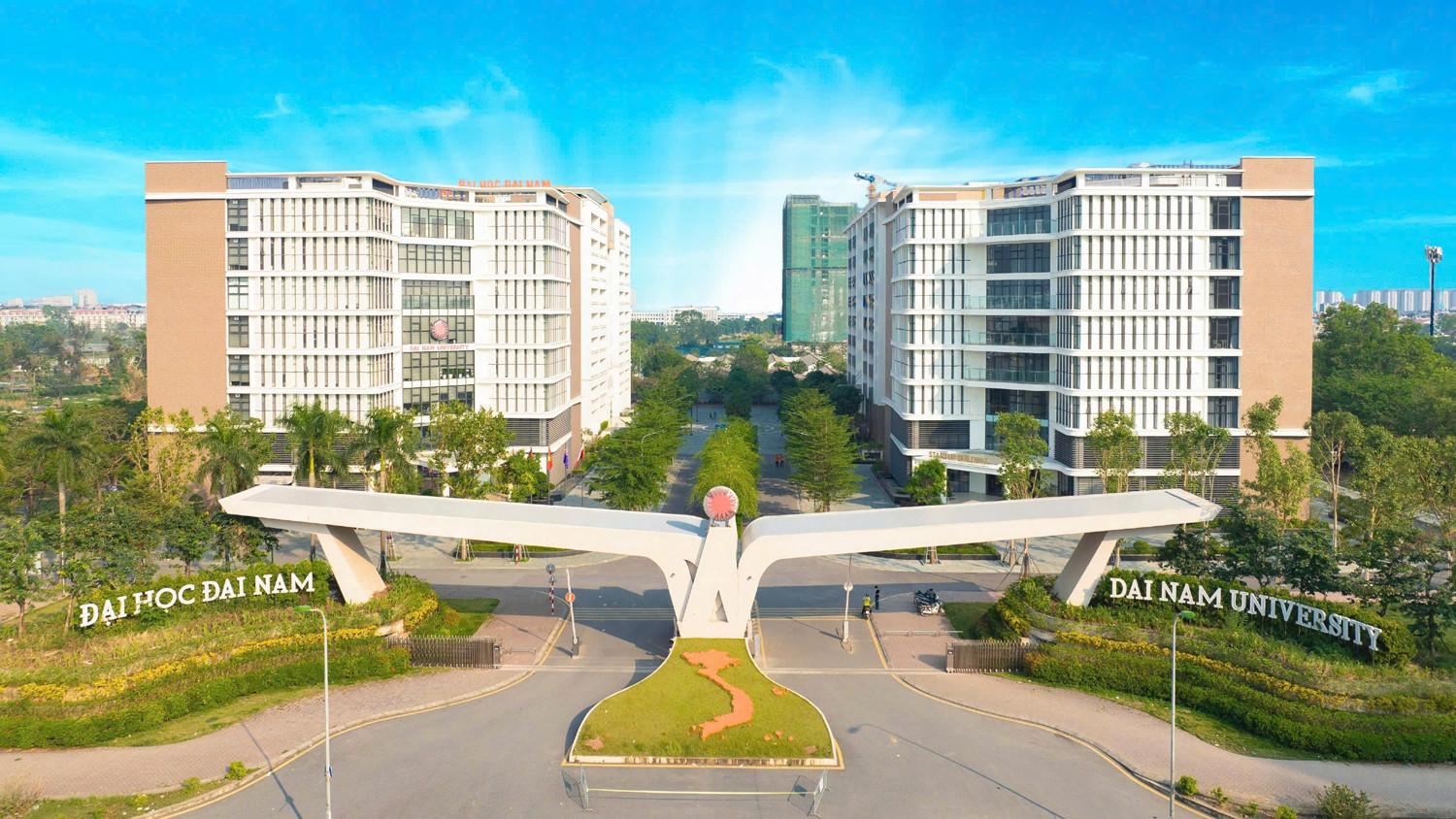The innovation process of Vietnam's payment system
Posted date 19/09/2016
10.505 view

MSc. Tran Thi Lan Phuong - Faculty of Finance
In the history of the world economy, money has undergone many stages of development. Money can be rare seashells, metal coins, paper money and can be just electronic messages. Money and payment systems play an extremely important role in economic development. If the economy is considered as a body, then money is considered as blood units and the payment system is the veins that carry blood everywhere to nourish the body. Along with the development of money, the payment system has also undergone real revolutionary innovations.
In Vietnam, the Law on the State Bank of Vietnam 2010 stipulates: The State Bank of Vietnam (SBV) is the agency responsible for organizing, managing, and supervising the national payment system, providing payment services to banks; participating in organizing and supervising the operation of payment systems in the economy; and managing payment instruments in the economy. To have a modern payment system like today, the Vietnamese payment system has gone through many ups and downs and historical events.
1. History of formation and development
On September 2, 1945, the Democratic Republic of Vietnam was established. In order for the revolutionary government to build an independent and autonomous currency, President Ho Chi Minh signed Decree No. 15/SL dated May 6, 1951 to establish the National Bank of Vietnam, the predecessor of today's State Bank. The main tasks of the State Bank of Vietnam during this period were to manage the issuance of banknotes and organize currency circulation, manage the State Treasury, implement credit policies to develop production, coordinate with trade to manage currency and fight against the enemy in currency. During the resistance war against the US (1955-1975), the organization of currency circulation was mainly through transportation and cash payment. Based on the production plan, product consumption, salary... of each province, cash was distributed to localities by specialized vehicles and assigned to the State Bank branches in the provinces for management.
After the war, the government's deficit had to rely on printing money to maintain, in addition to the spiral of prices-wages-money that caused hyperinflation to reach 774.7% in 1986 and remained at 2 to 3 digits until the early 90s of the last century. In response to the above developments and urgent needs, the Governor of the State Bank issued Decision No. 06/1992. According to this decision, customers did not have to transport large amounts of cash between localities, but only needed to deposit money at the local State Bank, then the recipient in another place could withdraw the money. This solution helped collect a large amount of money from circulation, regulate money supply between provinces, ensure safety and reduce costs in production and circulation of goods.
Following Decision 06/1992, the Governor of the State Bank issued Decision 39/1992 to pilot electronic money transfers via the State Bank. This was the first time the State Bank applied information technology in payment activities, meeting the demand for cheque payments for customers outside the province and city. The electronic money transfer system via the State Bank is the predecessor of modern electronic payment systems that have been deployed during the renovation period.
On November 25, 1993, the Government issued Decree No. 91/1993/ND-CP on the organization of non-cash payments. This Decree defined the subjects of regulation, the relationships between the subjects and the basic principles in non-cash payments. Thus, since 1993, the Vietnamese payment system has been divided into two distinct levels: the State Bank plays the role of a bank for banks, responsible for non-cash payments for commercial banks and the State Treasury; while commercial banks and the State Treasury are responsible for non-cash payments for individuals and organizations.
The country entered a period of innovation, the economy has made great strides in development. In response to customers' payment requirements, banks have linked together, thereby forming networks and payment systems between banks.
With the continuous development of the payment system, together with the support of the World Bank, the State Bank implemented the project to modernize the payment system of the Vietnamese banking sector, phase 1 (Project PSBM1) from November 1995 to December 2003 with a total loan of 49 million USD. The result of this project was that the interbank electronic payment system (IBPS) of the State Bank was deployed in 5 provinces and cities including Hanoi, Hai Phong, Da Nang, Can Tho and Ho Chi Minh City. Commercial banks participating in the IBPS system can reduce the payment time from 30 days in mid-1995 to 24 hours, thereby promoting capital circulation.
2. Current status of Vietnam's payment system
2.1. Current status of Vietnam's payment system
Currently, commercial banks have built information technology infrastructure, management information systems, and put into use new, safe, effective, and modern products and services such as ATM cards, same-day payment services, credit management, and money transfers. The banking service system also allows participating commercial banks to apply accounting and financial reporting practices based on international accounting standards.
With the success of the PSBM1 project, the World Bank decided to provide credit to Vietnam to implement the project of modernizing the payment system of the Vietnamese banking sector in phase 2 with a special design model "all in one" - the IBPS system including modules: High value payment, low value payment, clearing and immediate total settlement. The system covers the whole country with the main processing center being the national payment center, the backup center, 6 regional centers and 63 provincial processing centers located at the State Bank branches in provinces and cities nationwide. In 2014, the IBPS system transferred 46,600 trillion VND, 12 times the GDP of Vietnam in the same year. As of the first quarter of 2016, the system has connected to 95 credit institutions with 355 member units participating in direct payment, including 292 member units belonging to 95 credit institutions and 63 units belonging to the State Bank. On average, the system processes about 320,000 transactions per day with a total turnover of nearly 180,000 billion VND. With a designed capacity to connect to 2,000 member units and process 2 million transactions per day, the IBPS system has become a modern national payment axis, ready to meet the capital circulation needs of the economy and is an important premise for the development and promotion of non-cash payments.
Today, in addition to the IBPS system of the State Bank, other key payment systems operating in the market include: Securities depository and settlement system of the Vietnam Securities Depository Center (VSD); Securities transaction settlement system of the Bank for Investment and Development of Vietnam (BIDV); Foreign exchange settlement system of the Bank for Foreign Trade of Vietnam (VCB). These are the three key systems, in addition to: banknetvn card payment system; Clearing centers at the State Bank of 63 provinces and cities; securities depository centers. These systems are all connected to the above three systems to carry out their transactions.
2.2. Some limitations in the development of Vietnam's payment system
Firstly, the payment system in Vietnam is relatively modern, meeting the payment needs of the economy, especially the strong development of financial products. However, there are currently too many standards for financial activities. The payment system must maintain many standards, causing waste and overlap.
Second, the newly established clearinghouse for retail transactions is still weak.
Third, the State Bank cannot control all capital flows in the economy because domestic and foreign currency transactions and securities transactions have not been processed synchronously on the interbank electronic payment system.
3. Solutions for developing Vietnam's payment system
3.1. Update world payment technology
a. Apply international standards
Currently, countries around the world have too many standards for financial activities: ISO 15022 for securities transactions; ISO 8583 used in card transactions; FIX standard for securities transactions in the Front-Office department, FPML standard for derivative transactions. To solve the problem of having to maintain many standards and many systems causing waste, the International Organization for Standardization ISO issued the ISO 20022 standard in 2004 to replace all electronic messages in the financial sector. To date, ISO 20022 has been widely applied worldwide in projects and payment system upgrades, mainly in regions and countries with developed financial markets and advanced IT infrastructure such as the US, EU, Japan, Canada, Singapore, China, India. Therefore, Vietnam also needs a clear roadmap in applying this standard to the payment system.
b. Building a clearinghouse for retail transactions
In Vietnam, the Prime Minister signed Decision 291/2006/QD-TTg dated December 29, 2006 approving the Project on non-cash payments for the period 2006-2010 and orientation to 2020, according to which the State Bank of Vietnam will take the lead in building a clearing center for retail transactions, a unified card switching center and connecting the securities clearing and settlement system with the national interbank payment system.
In fact, the construction of an automatic clearing house (ACH) in Vietnam is being implemented with the Vietnam National Financial Switching Joint Stock Company changing its name to Vietnam National Payment Joint Stock Company (NAPAS) in February 2016. With the construction of ACH, NAPAS will complete its assigned task of completing the national retail payment infrastructure and become the first ACH in Vietnam.
3.2. Control of foreign exchange settlement system and securities settlement system.
The State Bank, as the agency supervising the payment system, has not yet fully controlled the payment systems and has not yet exploited immediate developments in the market to serve the management of monetary and foreign exchange policies. Currently, the Joint Stock Commercial Bank for Foreign Trade of Vietnam controls the foreign exchange payment system of Vietnam, and the Joint Stock Commercial Bank for Investment and Development of Vietnam controls the securities payment system at the two stock exchanges in Hanoi and Ho Chi Minh City. Meanwhile, the State Bank is the agency managing the national foreign exchange reserves and operating the exchange rate policy. This leads to the State Bank not fully grasping the capital flows circulating in the economy to make accurate and timely decisions.
However, in response to the development trend of the world payment system and to increase control over the payment system, the State Bank of Vietnam is urgently handling the above issue. The project to add foreign currency payment function to the interbank electronic payment system is being developed. The Ministry of Finance and the State Bank of Vietnam are coordinating to transfer the Government Bond payment function on the basis of connecting the securities payment system at the securities depository center with the interbank electronic payment system. Certainly, when all domestic and foreign currency transactions and securities transactions are processed synchronously on the interbank electronic payment system, the State Bank of Vietnam will control all capital flows in the economy, thereby having accurate analysis and predictions in implementing monetary policy and price stabilization.
REFERENCES
1. Le Dinh Hop 2006, “Reviewing the innovation process of the Vietnamese banking system in the field of payment and issues of the new development period”
2. Pham Bao Lam, “ ISO 20022 - New standard system for financial transactions and opportunities and challenges in implementation in Vietnam”, Banking Magazine 2015
3. State Bank 2016, Banking and Payment System Modernization Project
4. Banking Magazine 2016
www.sbv.gov.vn
www.iso20022.org
www.vietcombank.com.vn
www.bidv.com.vn
In Vietnam, the Law on the State Bank of Vietnam 2010 stipulates: The State Bank of Vietnam (SBV) is the agency responsible for organizing, managing, and supervising the national payment system, providing payment services to banks; participating in organizing and supervising the operation of payment systems in the economy; and managing payment instruments in the economy. To have a modern payment system like today, the Vietnamese payment system has gone through many ups and downs and historical events.
1. History of formation and development
On September 2, 1945, the Democratic Republic of Vietnam was established. In order for the revolutionary government to build an independent and autonomous currency, President Ho Chi Minh signed Decree No. 15/SL dated May 6, 1951 to establish the National Bank of Vietnam, the predecessor of today's State Bank. The main tasks of the State Bank of Vietnam during this period were to manage the issuance of banknotes and organize currency circulation, manage the State Treasury, implement credit policies to develop production, coordinate with trade to manage currency and fight against the enemy in currency. During the resistance war against the US (1955-1975), the organization of currency circulation was mainly through transportation and cash payment. Based on the production plan, product consumption, salary... of each province, cash was distributed to localities by specialized vehicles and assigned to the State Bank branches in the provinces for management.
After the war, the government's deficit had to rely on printing money to maintain, in addition to the spiral of prices-wages-money that caused hyperinflation to reach 774.7% in 1986 and remained at 2 to 3 digits until the early 90s of the last century. In response to the above developments and urgent needs, the Governor of the State Bank issued Decision No. 06/1992. According to this decision, customers did not have to transport large amounts of cash between localities, but only needed to deposit money at the local State Bank, then the recipient in another place could withdraw the money. This solution helped collect a large amount of money from circulation, regulate money supply between provinces, ensure safety and reduce costs in production and circulation of goods.
Following Decision 06/1992, the Governor of the State Bank issued Decision 39/1992 to pilot electronic money transfers via the State Bank. This was the first time the State Bank applied information technology in payment activities, meeting the demand for cheque payments for customers outside the province and city. The electronic money transfer system via the State Bank is the predecessor of modern electronic payment systems that have been deployed during the renovation period.
On November 25, 1993, the Government issued Decree No. 91/1993/ND-CP on the organization of non-cash payments. This Decree defined the subjects of regulation, the relationships between the subjects and the basic principles in non-cash payments. Thus, since 1993, the Vietnamese payment system has been divided into two distinct levels: the State Bank plays the role of a bank for banks, responsible for non-cash payments for commercial banks and the State Treasury; while commercial banks and the State Treasury are responsible for non-cash payments for individuals and organizations.
The country entered a period of innovation, the economy has made great strides in development. In response to customers' payment requirements, banks have linked together, thereby forming networks and payment systems between banks.
With the continuous development of the payment system, together with the support of the World Bank, the State Bank implemented the project to modernize the payment system of the Vietnamese banking sector, phase 1 (Project PSBM1) from November 1995 to December 2003 with a total loan of 49 million USD. The result of this project was that the interbank electronic payment system (IBPS) of the State Bank was deployed in 5 provinces and cities including Hanoi, Hai Phong, Da Nang, Can Tho and Ho Chi Minh City. Commercial banks participating in the IBPS system can reduce the payment time from 30 days in mid-1995 to 24 hours, thereby promoting capital circulation.
2. Current status of Vietnam's payment system
2.1. Current status of Vietnam's payment system
Currently, commercial banks have built information technology infrastructure, management information systems, and put into use new, safe, effective, and modern products and services such as ATM cards, same-day payment services, credit management, and money transfers. The banking service system also allows participating commercial banks to apply accounting and financial reporting practices based on international accounting standards.
With the success of the PSBM1 project, the World Bank decided to provide credit to Vietnam to implement the project of modernizing the payment system of the Vietnamese banking sector in phase 2 with a special design model "all in one" - the IBPS system including modules: High value payment, low value payment, clearing and immediate total settlement. The system covers the whole country with the main processing center being the national payment center, the backup center, 6 regional centers and 63 provincial processing centers located at the State Bank branches in provinces and cities nationwide. In 2014, the IBPS system transferred 46,600 trillion VND, 12 times the GDP of Vietnam in the same year. As of the first quarter of 2016, the system has connected to 95 credit institutions with 355 member units participating in direct payment, including 292 member units belonging to 95 credit institutions and 63 units belonging to the State Bank. On average, the system processes about 320,000 transactions per day with a total turnover of nearly 180,000 billion VND. With a designed capacity to connect to 2,000 member units and process 2 million transactions per day, the IBPS system has become a modern national payment axis, ready to meet the capital circulation needs of the economy and is an important premise for the development and promotion of non-cash payments.
Today, in addition to the IBPS system of the State Bank, other key payment systems operating in the market include: Securities depository and settlement system of the Vietnam Securities Depository Center (VSD); Securities transaction settlement system of the Bank for Investment and Development of Vietnam (BIDV); Foreign exchange settlement system of the Bank for Foreign Trade of Vietnam (VCB). These are the three key systems, in addition to: banknetvn card payment system; Clearing centers at the State Bank of 63 provinces and cities; securities depository centers. These systems are all connected to the above three systems to carry out their transactions.
2.2. Some limitations in the development of Vietnam's payment system
Firstly, the payment system in Vietnam is relatively modern, meeting the payment needs of the economy, especially the strong development of financial products. However, there are currently too many standards for financial activities. The payment system must maintain many standards, causing waste and overlap.
Second, the newly established clearinghouse for retail transactions is still weak.
Third, the State Bank cannot control all capital flows in the economy because domestic and foreign currency transactions and securities transactions have not been processed synchronously on the interbank electronic payment system.
3. Solutions for developing Vietnam's payment system
3.1. Update world payment technology
a. Apply international standards
Currently, countries around the world have too many standards for financial activities: ISO 15022 for securities transactions; ISO 8583 used in card transactions; FIX standard for securities transactions in the Front-Office department, FPML standard for derivative transactions. To solve the problem of having to maintain many standards and many systems causing waste, the International Organization for Standardization ISO issued the ISO 20022 standard in 2004 to replace all electronic messages in the financial sector. To date, ISO 20022 has been widely applied worldwide in projects and payment system upgrades, mainly in regions and countries with developed financial markets and advanced IT infrastructure such as the US, EU, Japan, Canada, Singapore, China, India. Therefore, Vietnam also needs a clear roadmap in applying this standard to the payment system.
b. Building a clearinghouse for retail transactions
In Vietnam, the Prime Minister signed Decision 291/2006/QD-TTg dated December 29, 2006 approving the Project on non-cash payments for the period 2006-2010 and orientation to 2020, according to which the State Bank of Vietnam will take the lead in building a clearing center for retail transactions, a unified card switching center and connecting the securities clearing and settlement system with the national interbank payment system.
In fact, the construction of an automatic clearing house (ACH) in Vietnam is being implemented with the Vietnam National Financial Switching Joint Stock Company changing its name to Vietnam National Payment Joint Stock Company (NAPAS) in February 2016. With the construction of ACH, NAPAS will complete its assigned task of completing the national retail payment infrastructure and become the first ACH in Vietnam.
3.2. Control of foreign exchange settlement system and securities settlement system.
The State Bank, as the agency supervising the payment system, has not yet fully controlled the payment systems and has not yet exploited immediate developments in the market to serve the management of monetary and foreign exchange policies. Currently, the Joint Stock Commercial Bank for Foreign Trade of Vietnam controls the foreign exchange payment system of Vietnam, and the Joint Stock Commercial Bank for Investment and Development of Vietnam controls the securities payment system at the two stock exchanges in Hanoi and Ho Chi Minh City. Meanwhile, the State Bank is the agency managing the national foreign exchange reserves and operating the exchange rate policy. This leads to the State Bank not fully grasping the capital flows circulating in the economy to make accurate and timely decisions.
However, in response to the development trend of the world payment system and to increase control over the payment system, the State Bank of Vietnam is urgently handling the above issue. The project to add foreign currency payment function to the interbank electronic payment system is being developed. The Ministry of Finance and the State Bank of Vietnam are coordinating to transfer the Government Bond payment function on the basis of connecting the securities payment system at the securities depository center with the interbank electronic payment system. Certainly, when all domestic and foreign currency transactions and securities transactions are processed synchronously on the interbank electronic payment system, the State Bank of Vietnam will control all capital flows in the economy, thereby having accurate analysis and predictions in implementing monetary policy and price stabilization.
REFERENCES
1. Le Dinh Hop 2006, “Reviewing the innovation process of the Vietnamese banking system in the field of payment and issues of the new development period”
2. Pham Bao Lam, “ ISO 20022 - New standard system for financial transactions and opportunities and challenges in implementation in Vietnam”, Banking Magazine 2015
3. State Bank 2016, Banking and Payment System Modernization Project
4. Banking Magazine 2016
www.sbv.gov.vn
www.iso20022.org
www.vietcombank.com.vn
www.bidv.com.vn
Latest article
View all Posts
Related articles
See all related Articles
Register for admission consultation 2025
Dai Nam University offers admissions to
36 academic programs
across a diverse range of disciplines, including Healthcare, Engineering and Technology, Economics and Business, and Social Sciences and Humanities.
Register now to secure
scholarships and tuition support worth up to 55 billion VND
scholarships and tuition support worth up to 55 billion VND

Register now to secure
scholarships and tuition support worth up to 55 billion VND
scholarships and tuition support worth up to 55 billion VND









